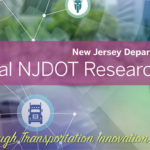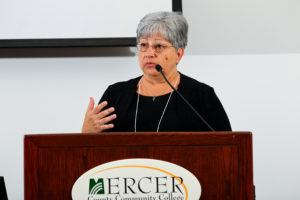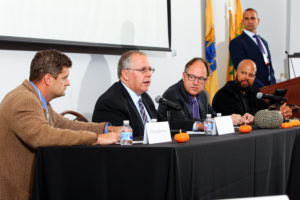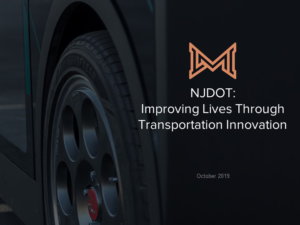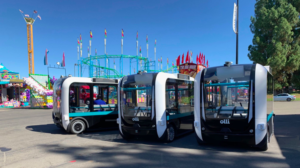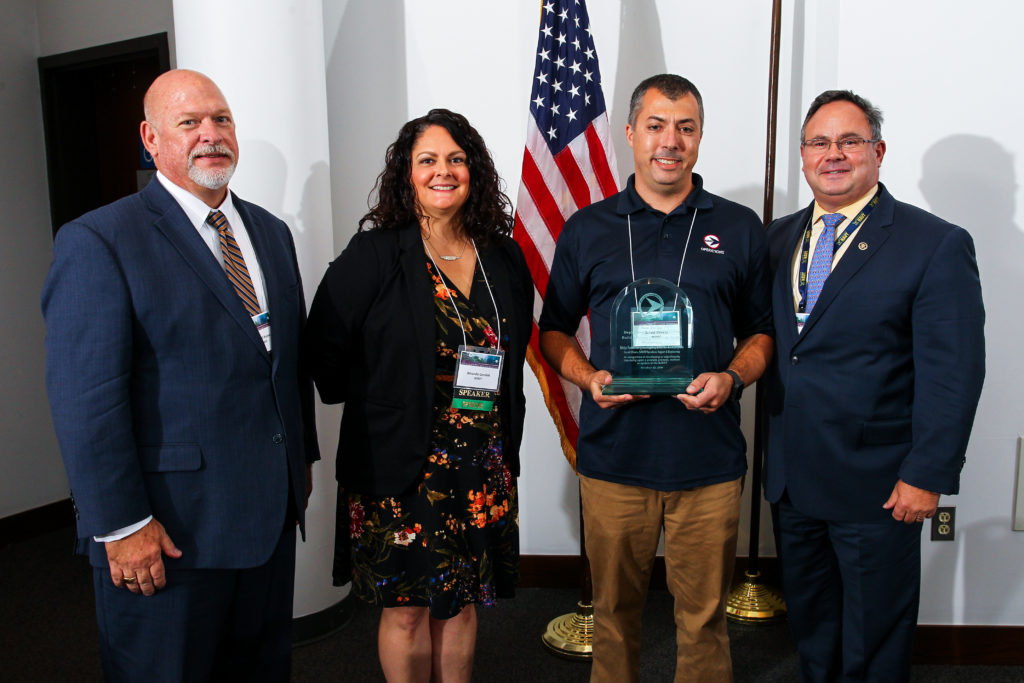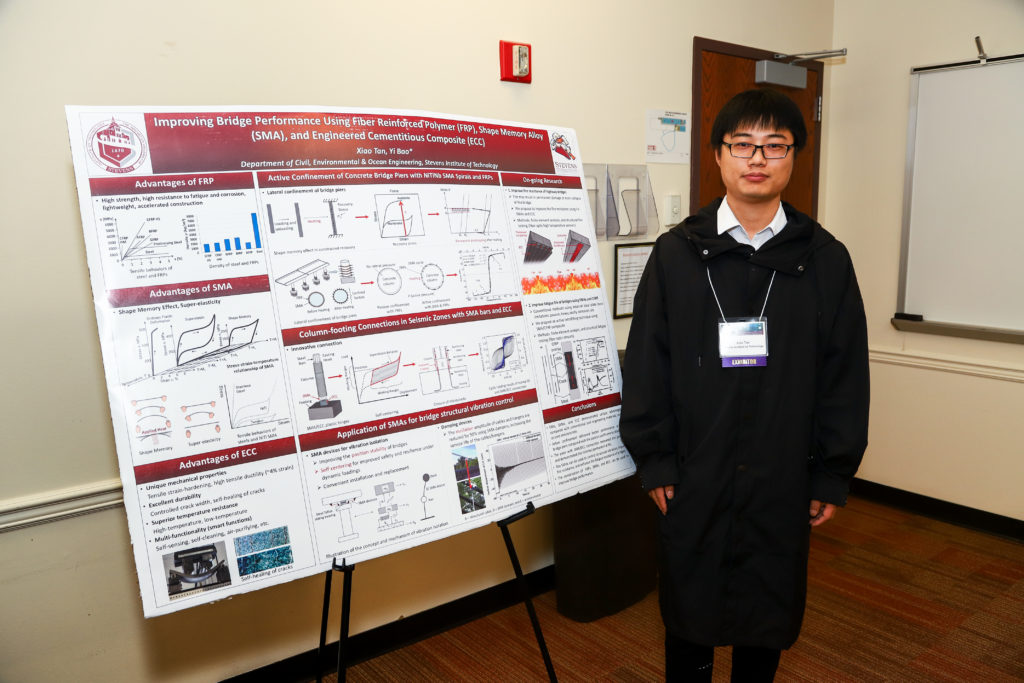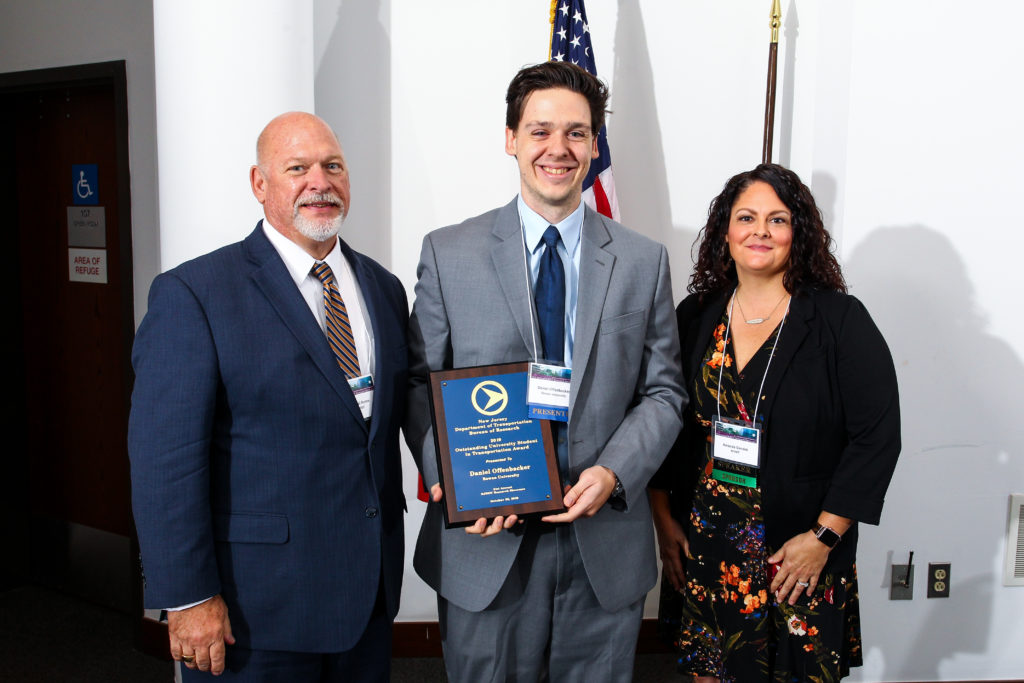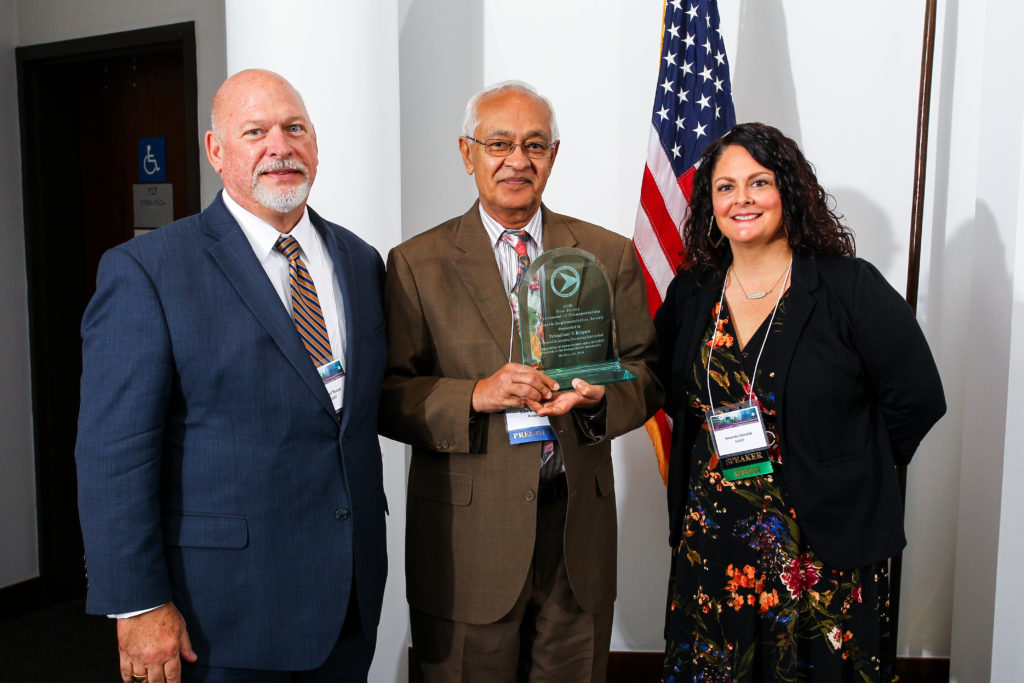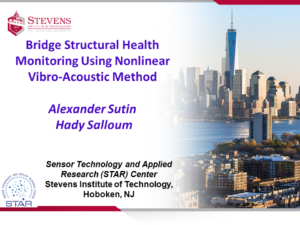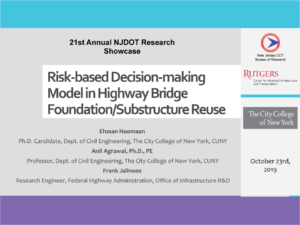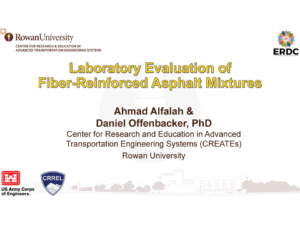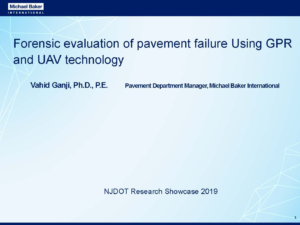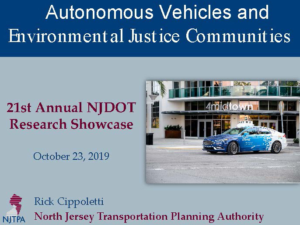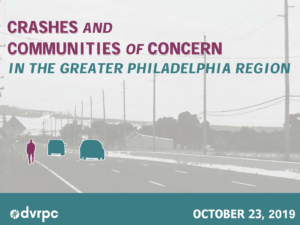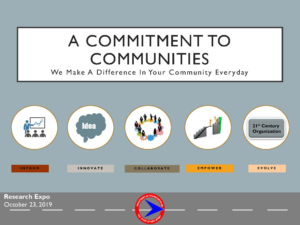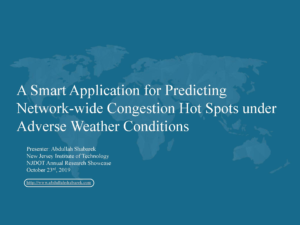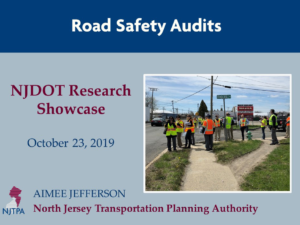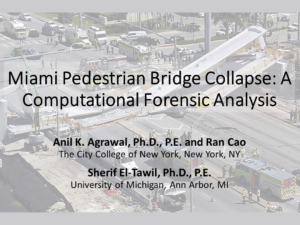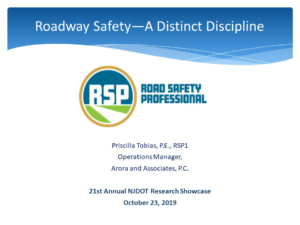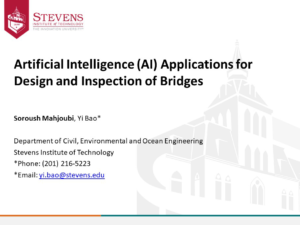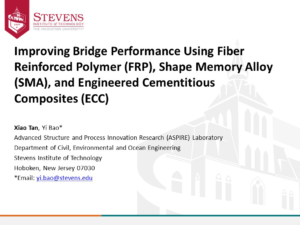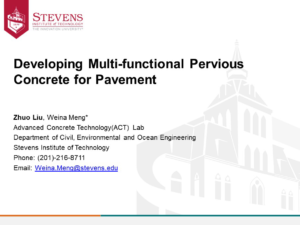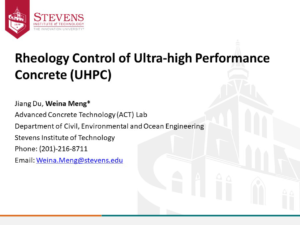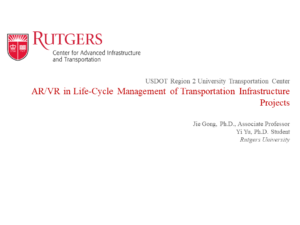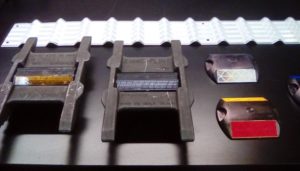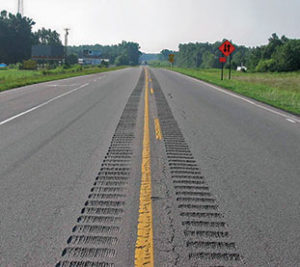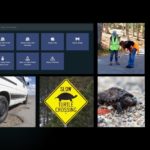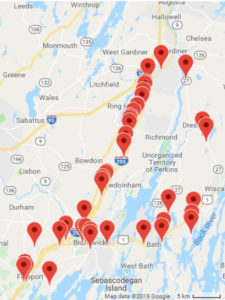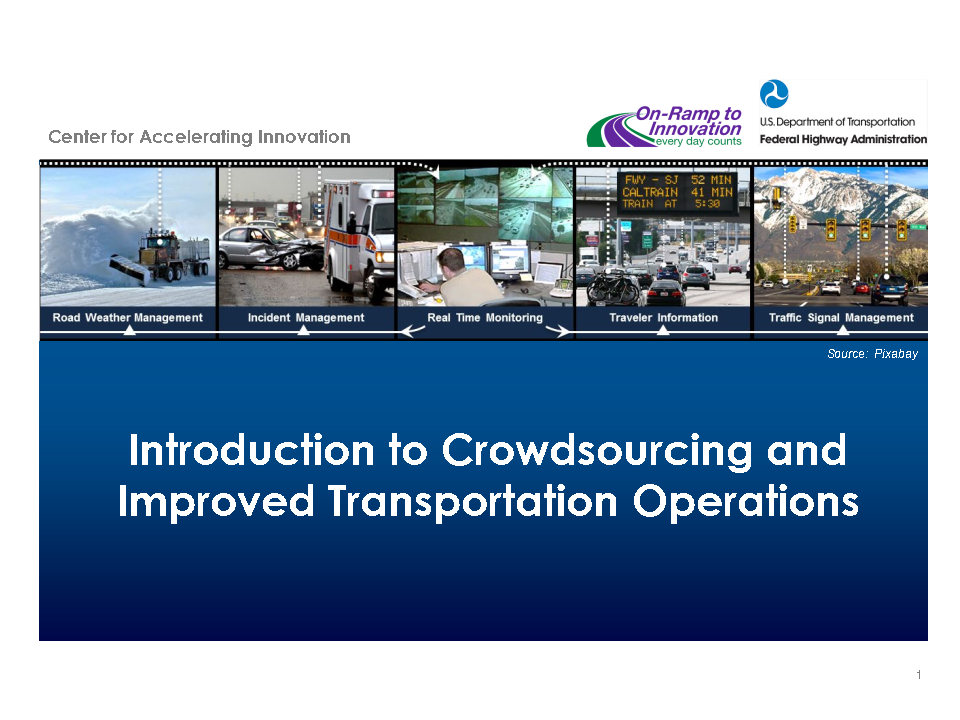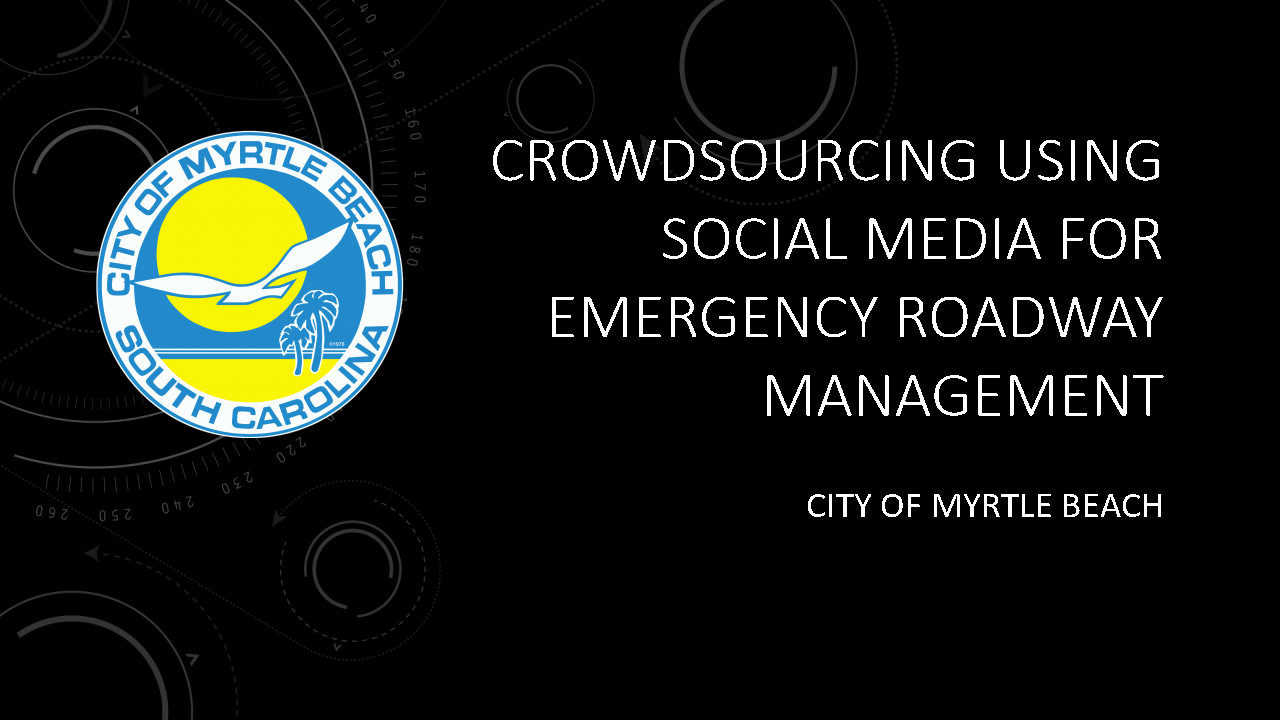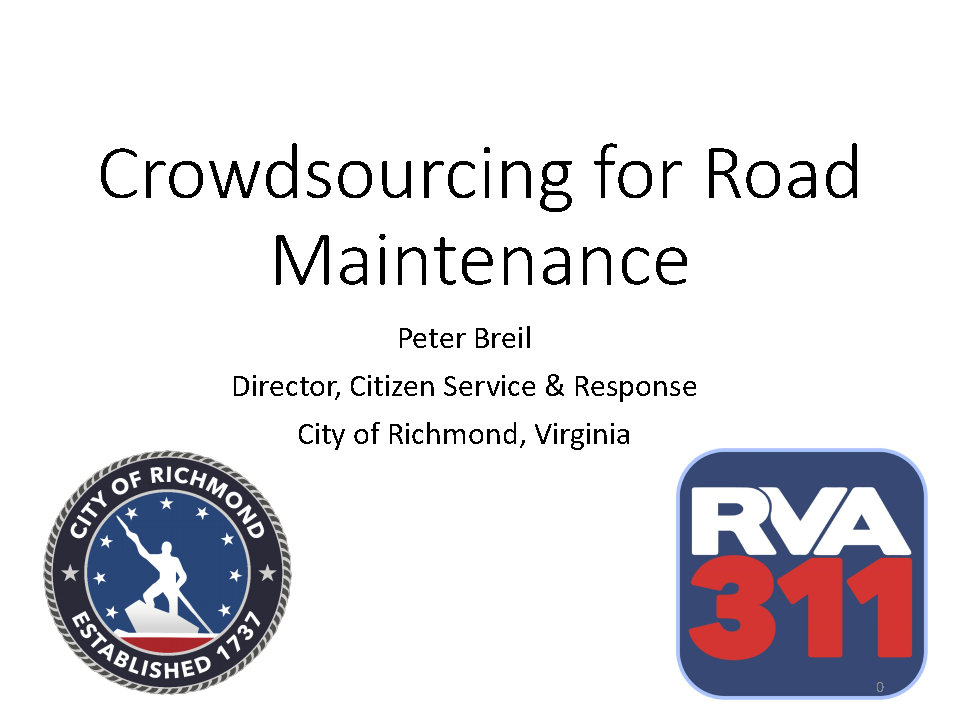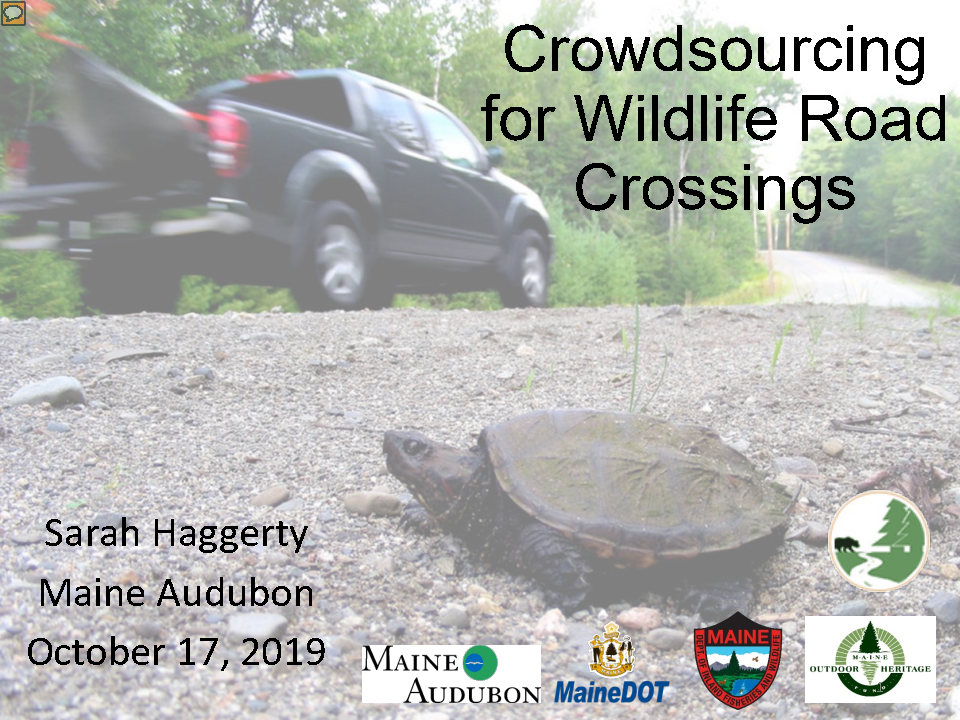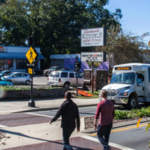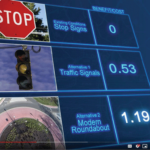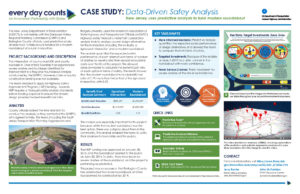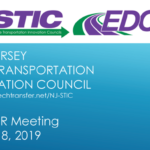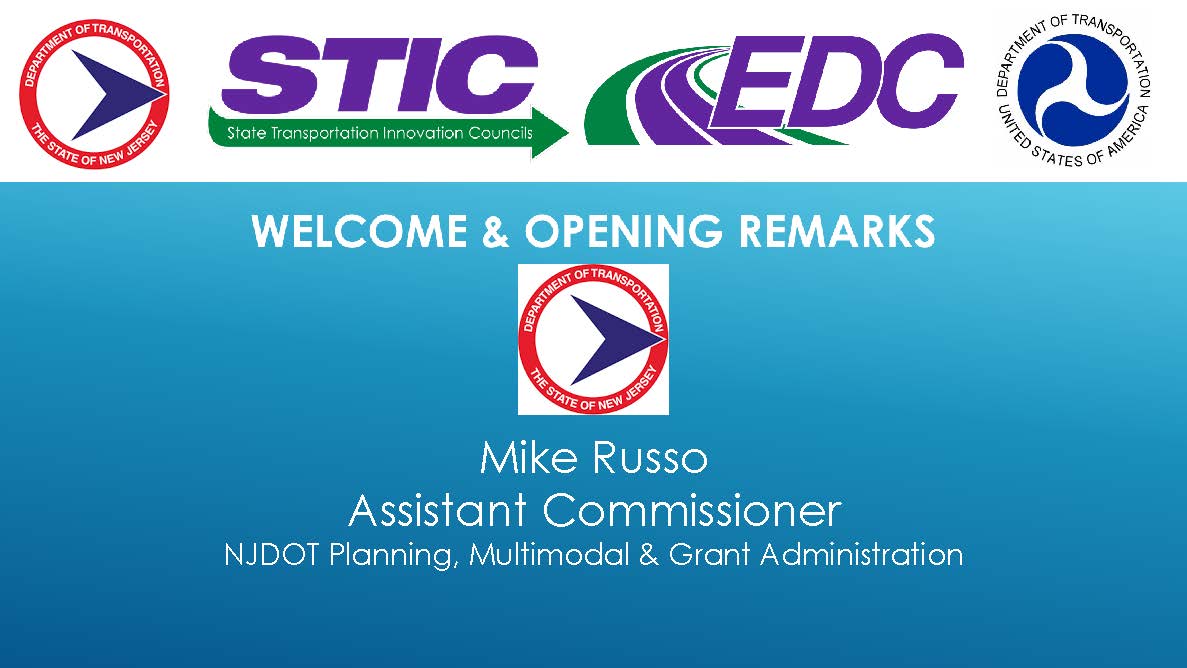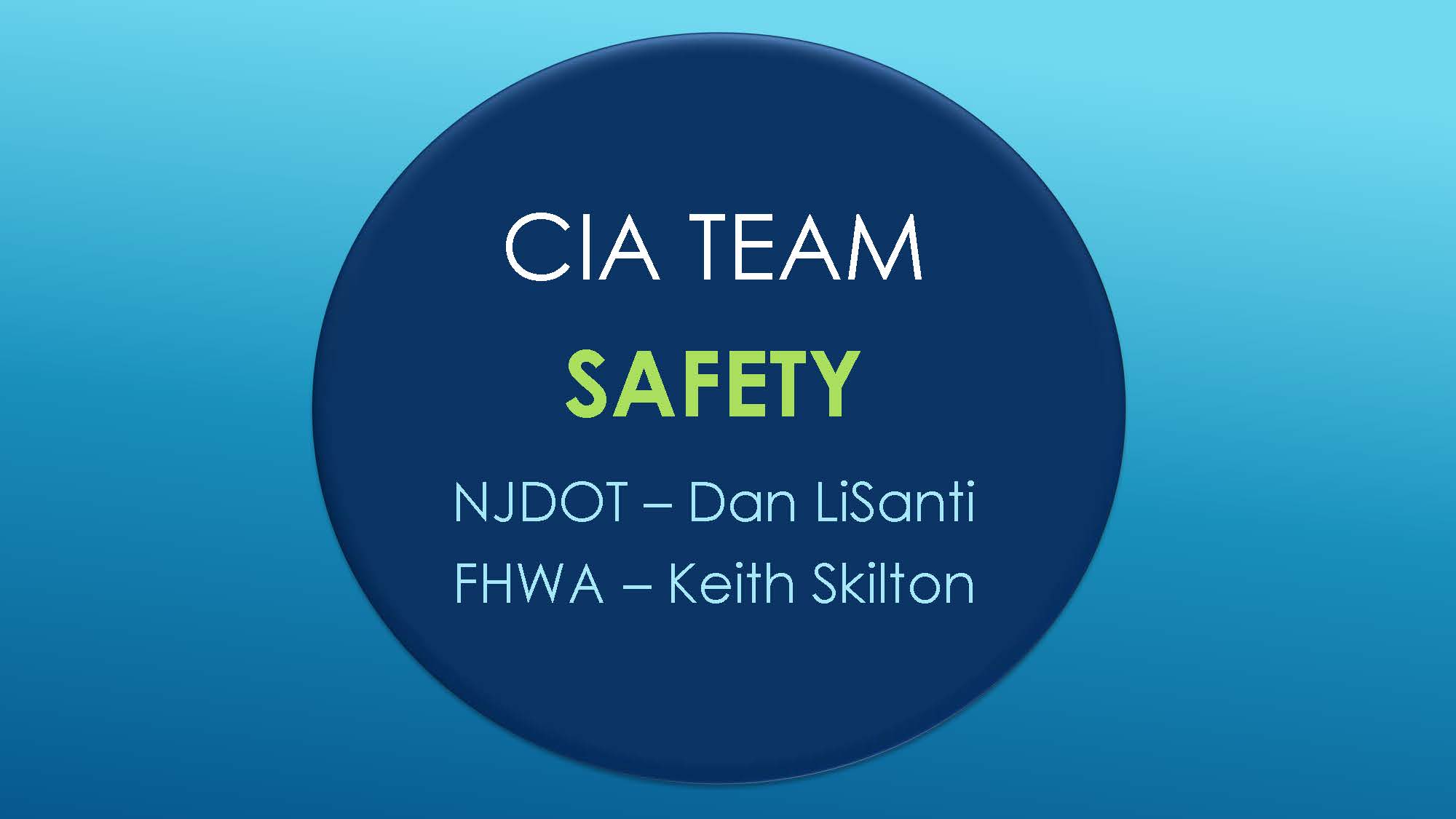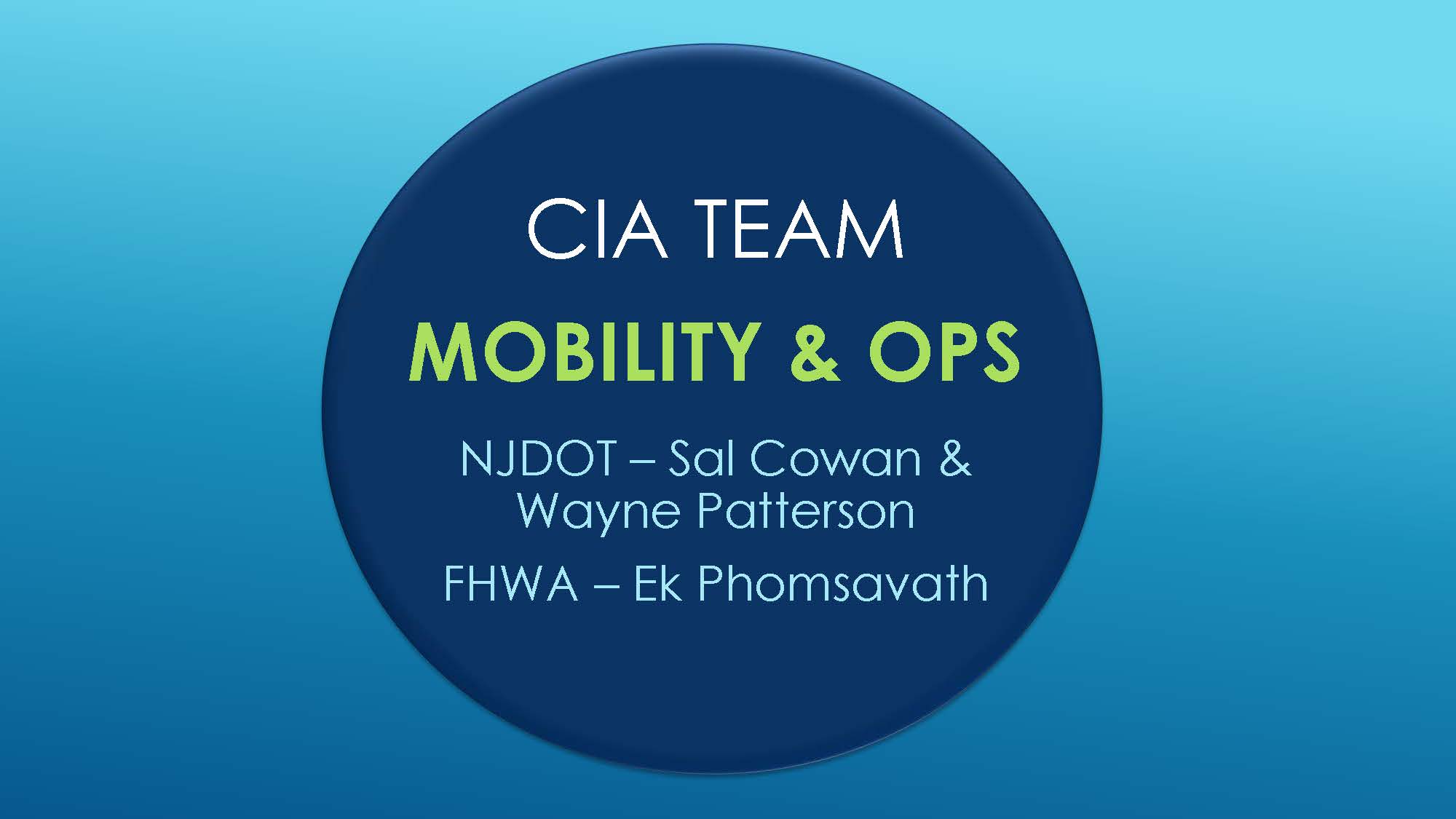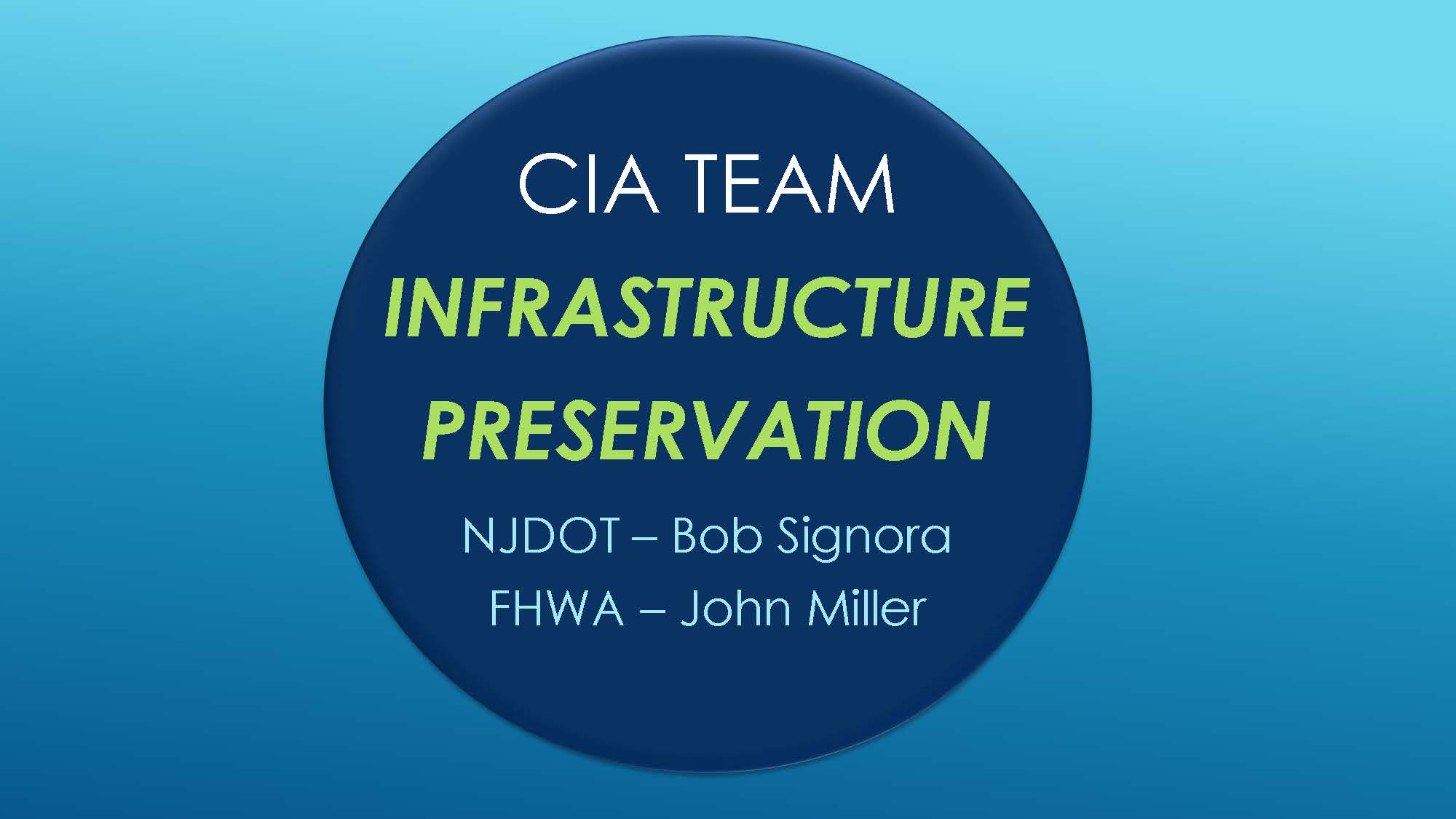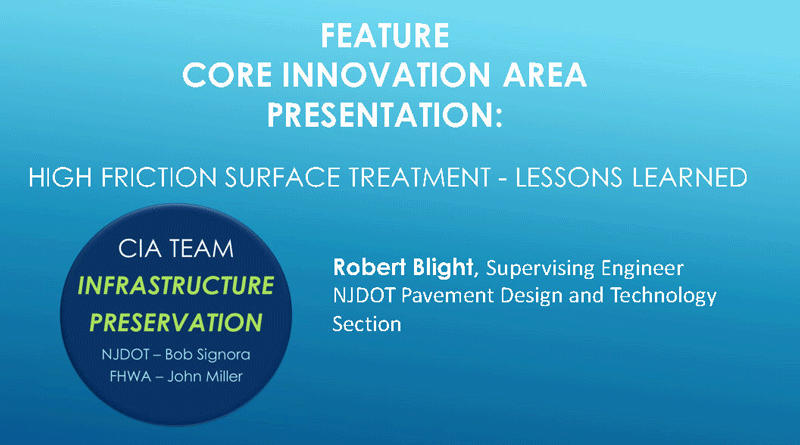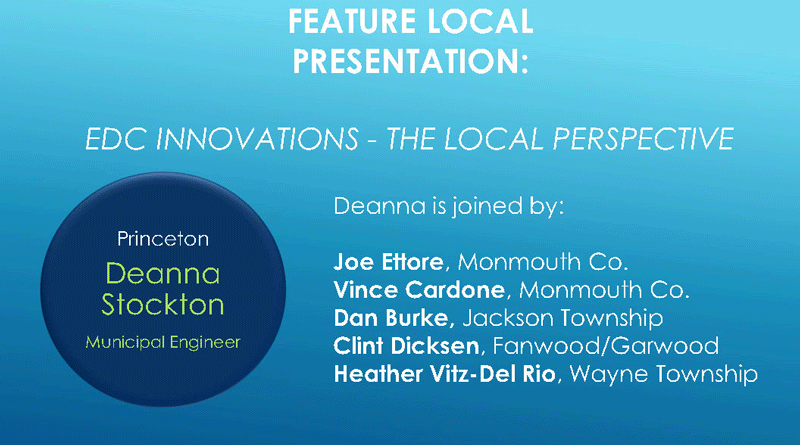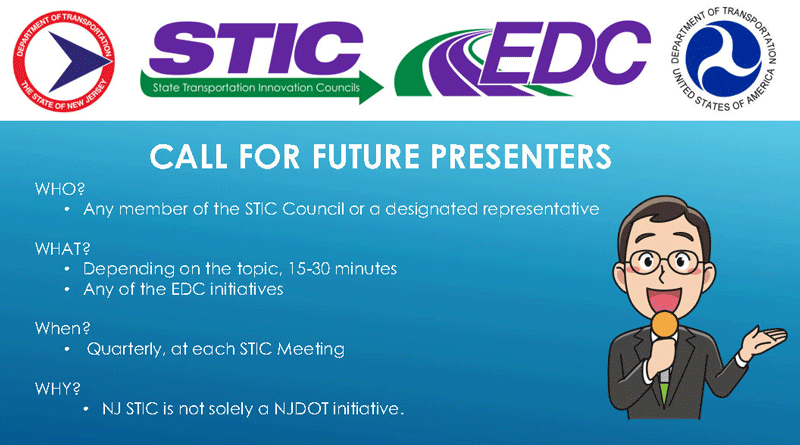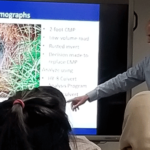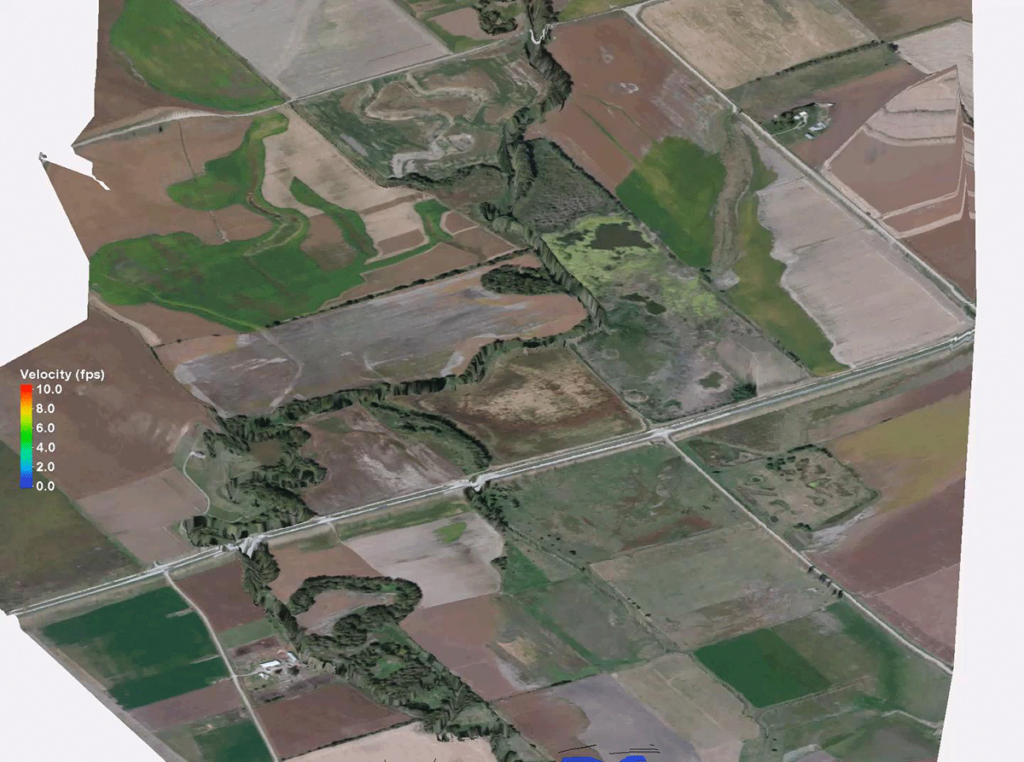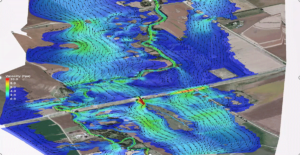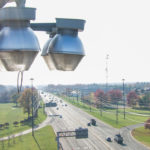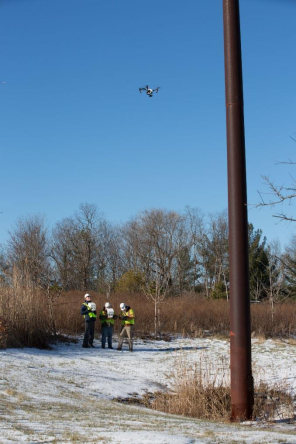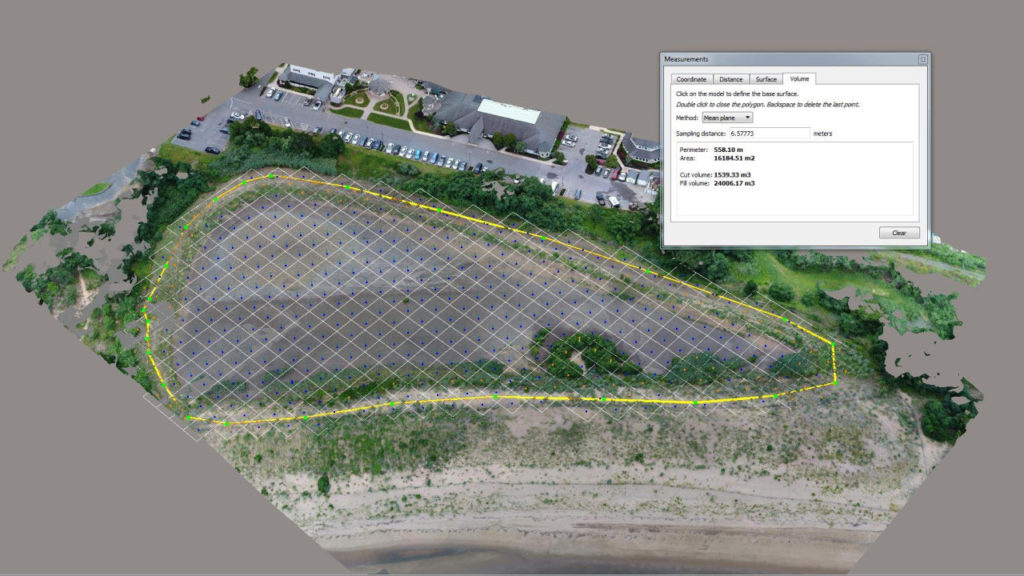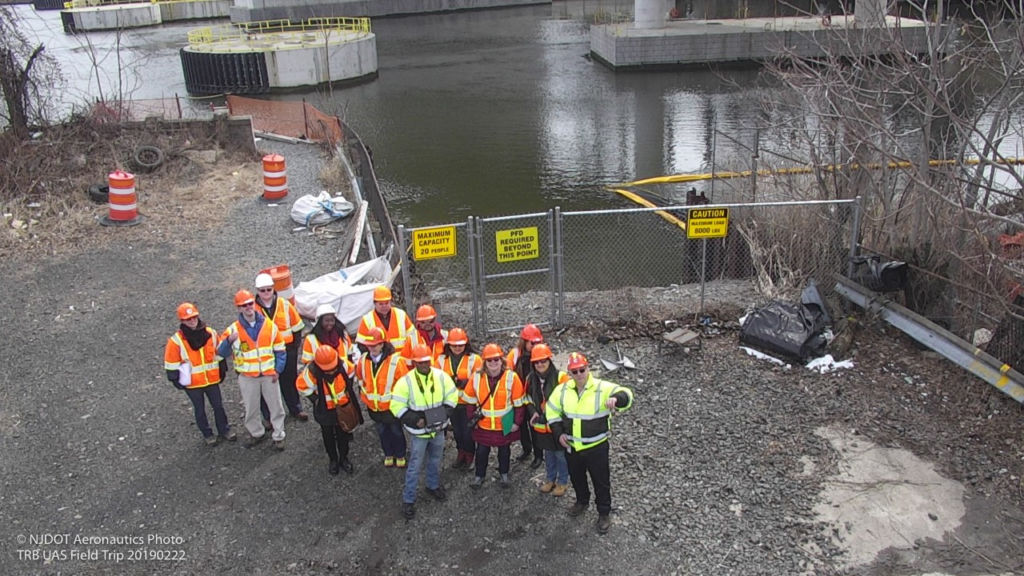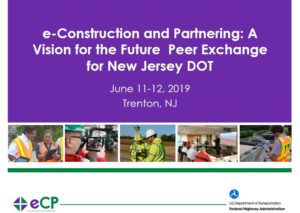Author Archive: David Aimen
Evaluating New Jersey’s Use of Raised Pavement Markers for Roadway Safety
In the United States, data has shown that more than a third of fatal crashes on two-lane undivided highways and 27 percent of fatal crashes on four-lane divided highways occur in dark, unlighted conditions. Raised Pavement Markers (RPMs) are a common device deployed for roadway safety around the world since the 1930s. RPMs are delineation devices used to improve preview distances and provide guidance for drivers in inclement weather and low-light conditions. There are two main types of RPMs, ones that can be used with snow plows and ones that cannot.
While most states install RPMs selectively based on particular locational characteristics of the roadways, New Jersey uses RPMs along all centerlines (solid and skip), regardless of traffic volume, roadway geometry, or roadway classification. The extensive use of RPMs in New Jersey has raised interest in understanding 1) whether this significant investment generates variant safety benefits at different locations; 2) whether there are alternatives or modifications to the existing RPMs; and 3) how to optimize the installation, monitoring, and maintenance of RPMs and their promising alternatives in order to attain a more cost-effective safety improvement.
The selected team from Rutgers University and Rensselaer Polytechnic Institute employed four distinct methods to address these research questions. The first was to conduct a literature review to inform the development of a methodological framework for quantifying the safety and cost-effectiveness of RPMs and their alternatives, based on specific road and traffic characteristics. Second, the researchers developed a luminance measurement method to compare the luminance of RPMs to different markers’ ability to inform drivers of road lines. Luminance measurement is defined as “the amount of visible light leaving a point on a surface in a given direction” (“Lighting Design Glossary”). Third, the group conducted a survey of other state DOTs practices and their guidelines for installation, including alternatives used. Lastly, the researchers developed a computer-aided decision support tool to calculate the life cycle costs of RPMs and their alternatives. Different alternatives were considered throughout the study, including various forms of rumble strips, preformed tape, and delineators.
The researchers came to several findings that provided insight into NJDOT’s current use and potential future research opportunities. The literature review of previous studies was inconclusive, with no consensus on whether RPMs affect the crash rate on roadways, with past research showing both negative and positive safety changes post-installation.
The survey of state DOTs yielded 22 responses from states throughout all regions of the country. The survey had two main sections, “RPM Installation” and “RPM Inspection and Maintenance”. No consensus or clear pattern was found among the states in terms of practices for installation, inspection, maintenance, and alternatives used. However, the researchers found that other state DOTs were more selective than New Jersey in choosing RPM installation sites based on traffic volume, accident history, and weather conditions.
To quantify the contribution that RPMs make towards safety outcomes on New Jersey roads, researchers compared the safety performance of county roads since unlike state roads, some county roads do not have RPMs installed. The researchers found that county roads with RPMs had a 19 percent lower crash rate than county roads without RPMs. The most significant decreases in crash rates occurred in nighttime, wet weather conditions, providing insight into the conditions that RPMs may be most effective.
In the lab luminance study, the team tested samples of new and used RPMs, along with alternatives such as wet pavement reflective tape and channel-mounted delineators to determine how far away drivers could see the markers in nighttime conditions. The average lifecycle for RPMs is 6 years, with a maintenance cycle of 2-3 years. Used RPMs showed a 20-30 percent decrease in luminance than new RPMs, but that did not translate to decreased visual performance.
Finally, the team created a computer-aided decision support tool to evaluate and compare the life cycle cost of RPMs and alternatives, based on specific operational characteristics. Decision-makers can couple information on safety benefits for each device with the total cost for per unit crash reduction from the tool to compare the value of the investment. The tool accounts for installation cost, traffic control cost, traffic delay cost, inspection cost, maintenance and repair cost, as well as the liability cost associated with incidents due to damaged RPMs or alternatives.
The research team also suggested several areas for future study for advancing NJDOT’s understanding of RPMs and their alternatives. The researchers recommended a study of optimal spacing or degree of continuous delineation that drivers need for safety. In the luminance study, all the devices had high visual performance despite variance in luminance when tested at a 100-meter viewing distance. However, the researchers noted, additional study was needed to see how the differences in luminance could affect visual performance at the threshold visibility distance (when the devices can be first seen). The results could help identify which device gives drivers more time and distance, resulting in potential reduction in nighttime crashes.
Lastly, one of the alternatives frequently mentioned throughout the study is rumble strips, which are used on roadways to create a noise and vibration to alert a driver when they leave their lane. When painted with retroflective coating to increase visibility, they are called rumble stripes (FHWA 2019). The researchers explained that rumble strips have not been studied in regard to safety effectiveness in New Jersey due to data limitations, making it a potential future research area.
New Jersey is in a unique position compared to other states with its comprehensive use of RPMs on state roadways. The researchers were able to provide valuable information to NJDOT, including a methodological framework for the department moving forward to quantify the safety effectiveness of RPMs and their alternatives and a computer-aided decision support tool to estimate life cycle cost. With this information and targeted areas for future research, NJDOT can aim to make cost-effective investments that will improve roadway safety.
Resources:
FHWA. “Rumble Strips and Rumble Stripes.” FHWA. April 1, 2019. https://safety.fhwa.dot.gov/roadway_dept/pavement/rumble_strips/general-information.cfm.
“Lighting Design Glossary.” Lighting Design and Simulation Knowledgebase. https://www.schorsch.com/en/kbase/glossary/luminance.html.
Liu, Xiang, John Bullough, Liwen Tian, Shan Jiang, and Mohsen Jafari. Evaluation of Raised Pavement Markers, Final Report. July 2018.
https://www.njdottechtransfer.net/wp-content/uploads/2019/04/FHWA-NJ-2018-004.pdf
Liu, Xiang, John Bullough, Liwen Tian, Shan Jiang, and Mohsen Jafari. “Technical Brief: Evaluation of Raised Pavement Markers.” July 2018.
https://www.njdottechtransfer.net/wp-content/uploads/2019/04/FHWA-NJ-2018-004-TB.pdf
Tech Talk! Webinar: Crowdsourcing for Local Operations
As the technology and portability of communications have become more widespread and instantaneous, "crowdsourcing" has become an increasingly popular method for identifying and addressing problems quickly. Crowdsourcing enables an organization to distribute workloads across a large group of people, utilizing their collective wisdom and amplifying the reach of the organization. Long popular for applications such as customer reviews for shoppers and critical takes from moviegoers, crowdsourcing tools are spreading in transportation and transforming the way operating agencies work with the public. Most often we have seen crowdsourcing used on apps like Waze for up-to-date traveler information or incident management, as these apps allow for every driver on the road to serve as the eyes and ears of the larger community.
On October 17, 2019, FHWA sponsored an innovation exchange webinar, "Crowdsourcing for Local Operations" that was “live” broadcasted by the Bureau of Research as part of its Tech Talk! series, for NJDOT staff who convened in the E&O Building, Training Room A. The webinar illustrated how local agencies are working, often with state partners, to expand the use of crowdsourcing across a wider set of application areas.
FHWA kicked off the webinar with a brief presentation, Introduction to Crowdsourcing and Improved Transportation Operations, that provided a definition and historical context for crowdsourcing, and a summary of typical sources of crowdsourcing data and applications in transportation. The presentation included an overview of the Every Day Counts (EDC) Program and technical assistance resources available at FHWA to support deployment of crowdsourcing. However, the primary purpose of the event was to showcase examples from around the country where Local Public Agencies and partnering stakeholders have deployed crowdsourcing solutions for emergency management, roadway and other maintenance, and wildlife protection.
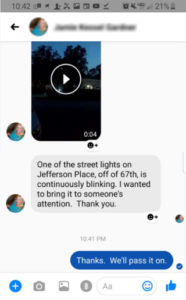
City of Myrtle Beach uses Facebook comments, direct messages, emails, phone calls, and other tools to receive citizen input.
Crowdsourcing Using Social Media for Emergency Roadway Management, City of Myrtle Beach, South Carolina. Mark Kruea, Public Information Director, described how the City of Myrtle Beach uses social media to help engage with residents quickly and effectively. The city takes phone calls, e-mails, and even messages and comments on Facebook on every topic, including trimming trees, fixing potholes, broken street lights, and other maintenance and needed capital improvements. The city tries to address requests within the same day which, in turn, encourages residents to use the system more frequently as they realize the city is listening and acting on suggestions. Mr. Kruea said that there was no reporting "threshold" for when a city would act on a specific comment or request, and even a single report of an issue can trigger a response. His talk made clear the potential benefits of fostering a strong trust between the community and the municipality, particularly in planning for and managing emergency situations. For example, during Hurricane Dorian, residents were able to send pictures of downed trees for clean-up crews to address, and adjustments were made to the storm level capacity of a regional detention pond prior to the storm event in response to community requests.
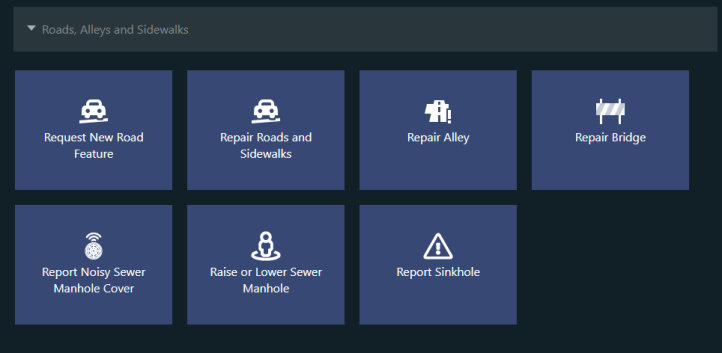
City of Richmond’s 311 portal makes it easy for citizens to report and track non-emergency service requests.
Crowdsourcing for Road Maintenance, City of Richmond, Virginia. Peter Briel, Director, Citizen Service & Response, spoke about the City of Richmond’s establishment of a 311 portal – phone, public internet portal, smartphone app -- for intake of most citizen requests for non-emergency services. The 311 program includes a call center, a request platform, and performance reporting. Once received, citizen requests are categorized by type and automatically routed to appropriate teams within the City’s various departments. Citizens can report a range of road issues through RVA311, including requests for new road infrastructure to report issues with maintenance, signage, traffic signals, and storm drain cleaning, among others. Citizens are able to upload photos through the app or the internet, check the status their requests, and receive push notifications when updates have been made by the city. Mr. Briel’s presentation highlighted some of the mapping and performance management measures available in using the 311 system along with some of the organizational, technical and cultural changes required for deploying the tool for the city residents and workforce. He noted that the most challenging part of implementation of the innovation was initiating the culture change between the citizens and the city so the 311 system would not become simply an app for complaints, but instead, for citizen empowerment.
While the first few presentations dealt with infrastructure maintenance and emergency response, the next two presenters showed how crowdsourcing could be used to avoid wildlife collisions and protect their habitats.
Crowdsourcing for Wildlife Road, Maine Audubon. Sarah Haggerty, a Conservation Biologist with Maine Audubon, described how her organization in association with Maine Department of Transportation and other environmental protection organizations, have worked to identify the worst areas for animal fatalities in order to prevent future accidents. Using an online tool created by the University of California-Davis Road Ecology Center, residents are able to upload photos and locations where they encounter roadkill, allowing the tool to identify hotspots around the state. In turn, municipalities can construct road-stream crossings that make it safe for wildlife passage as well as vehicular traffic, a strategy that was incentivized through extra points in state grants.
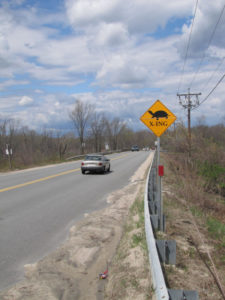
MassDOT has used historic roadway mortality data reported by citizen scientists and its maintenance personnel to prioritize and design signage, fencing, and crossings to protect wildlife endangered by traffic.
Linking Landscapes for Massachusetts Wildlife, Massachusetts Division of Fisheries and Wildlife. David Paulson, a Senior Endangered Species Environmental Specialist, described how his agency is working to incorporate habitat conservation into transportation planning and project development. Through the use of volunteers and MassDOT maintenance personnel, historic data on wildlife roadway mortality on particular road segments have been compiled. Citizens and workers have been asked to report locations where multiple turtles experience roadway mortality on a yearly basis, typically on roads which bisect wetlands. Concurrently, they also enlisted volunteers to help research amphibian migrations across roadways to establish documented migration routes that could be engineered around. The online tool collected data on location and roadkill numbers, giving Massachusetts a good idea of where countermeasures could be implemented.
Throughout the webinar, presentations highlighted different ways in which transportation system users and citizens can be turned into real-time sensors on system performance, providing low-cost, high-quality data on traffic operations, roadway conditions, wildlife mortality, and maintenance issues. Using crowdsourcing as a tool to garner information met with success in each of these cases, and the resulting actions taken by state and local governments have promoted trust between users and governing agencies. Given its wide-ranging impact and low costs to implement, FHWA surmised in closing that these and similar tools leveraging engagement would become industry standards in the future.
The Crowdsourcing for Local Operations webinar was one in a series of Innovation Exchange webinars sponsored by the Center for Local Aid Support (CLAS) in the Federal Highway Administration's Office of Innovative Program Delivery. Through Innovative Exchange webinars, CLAS seeks to bring cutting-edge transportation leaders to the table to share ideas and out of the box innovative practices that have proven results. More information about this webinar, upcoming webinars, and webinars available on demand can be found here.
NJLTAP – Safe Transportation for Every Pedestrian Workshop
Safe Transportation for Every Pedestrian (STEP) is a Federal Highway Administration Every Day Counts (EDC-5) initiative. The NJ Local Technical Assistance Program (NJLTAP), in association with NJDOT and FHWA, is holding an all-day workshop training event on October 31st with an instructor from FHWA Resource Center’s Safety & Design Technical Service Team. The workshop training will provide an overview of the pedestrian safety crossing problem and identify resources and strategies for addressing it.
Pedestrian fatalities are on the rise, and account for more than 16% of all traffic fatalities nationwide. New Jersey is a pedestrian safety focus state, meaning we have more pedestrian fatalities than the national average, at about 25%. The “Spectacular 7” safety treatments to address pedestrian safety crossing problems will be reviewed. These are:
- Rectangular rapid flashing beacons (RRFBs)
- Leading pedestrian intervals (LPIs)
- Crosswalk visibility enhancements
- Raised crosswalks
- Pedestrian crossing/refuge islands
- Pedestrian hybrid beacons
- Road diets
This is a full-day workshop with a group field exercise where participants will evaluate a nearby location for pedestrian safety and make recommendations for improvement if needed.
Agenda:
- Welcome and Introductions
- Why STEP: Background and Data
- Policies and Process
- STEP Treatments
- Site Visit
- Report Out
- Final Remarks and Evaluation
Instructor: Peter Eun, Transportation Safety Engineer, FHWA Resource Center’s Safety & Design Technical Service Team
Credits: 6 PDH, DCA CPWM credits applied for: 6 technical
There is no fee for this workshop, however advance registration is required.
For more information and to register for the event, visit NJLTAP Training & Events
New Protocol for Accepting Over-Coating Paint on Steel
The Research Advisory Committee of the American Association of State Highway and Transportation Officials (AASHTO) selected an NJDOT project as one of 16 high-value research projects for 2019 in the category of Smart Maintenance and Preservation. Researchers from Rutgers’ Center for Advanced Infrastructure and Transportation, Perumalsamy Balaguru, Husam Najm, and David Caronia, developed a new testing method for the durability of paint overcoat on steel structures, such as bridges.
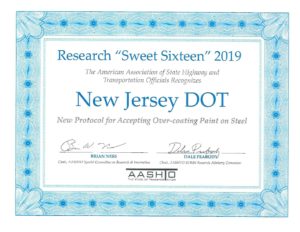
NJDOT received AASHTO’s Research “Sweet Sixteen” 2019 award for innovative research establishing a new protocol for durability testing of structural steel overcoats.
On behalf of the NJDOT Bureau of Research, Giri Venkiteela, Research Project Manager, delivered a poster presentation and Pragna Shah, Research Project Manager, accepted the AASHTO award at the 2019 National RAC and TRB State Representatives Meeting in Santa Fe, New Mexico in July 2019.
The new protocol allows for reduced testing time from previous methods, identifies durable coatings, simulates field performance, and has significant potential for adoption in accepting all new coatings. This new protocol will save money and reduce environmental pollution resulting from degraded coatings. The innovative research for this new protocol is described in the Final Report and Technical Brief.
Data-Driven Safety Analysis: New Jersey Case Study
The New Jersey Department of Transportation (NJDOT), in partnership with the Delaware Valley Regional Planning Commission (DVRPC) and Burlington County officials, used predictive safety analysis tools to help secure funding for a modern roundabout at a rural intersection. The intersection of county road 528 and county road 660 in Chesterfield Township had experienced severe crashes and had been identified for improvement in a prior study conducted by the DVRPC. However, state or county construction funding was not available. The team decided to apply for Highway Safety Improvement Program (HSIP) funding. However, HSIP requires a thorough safety analysis of projects before funding approval to ensure the chosen design provides the best benefit/cost ratio.
The analytical effort was recognized by the Federal Highway Administration in both a case study with links to several useful resources and the below video.
EDC-5 CHANGE: Collaborative Hydraulics (2.0) Advancing to the Next Generation of Engineering
On August 6th the NJDOT Bureau of Research hosted a Lunchtime Tech Talk! on “EDC-5 CHANGE: Collaborative Hydraulics (2.0) Advancing to the Next Generation of Engineering.” This event featured a presentation by Dr. Eric Brown, Senior Hydraulic Engineer, Geotechnical & Hydraulic Engineering, from the FHWA’s Resource Center. Under Round 5 of the Every Day Counts (EDC) program, Collaborative Hydraulics (2.0) provides the next-generation hydraulic modeling tools to improve the understanding of complex interactions between river or coastal environments and transportation assets, enabling better design, enhanced communication, and more efficient project delivery.
Dr. Brown began his presentation by providing a background of the discipline of hydraulic engineering and its place within the Federal Highway Administration (FHWA). This included an overview of the hydraulic engineering team at FHWA, including specializations and technical expertise. The National Hydraulic Team provides its FHWA offices nationwide with assistance in the hydraulic discipline. This includes interpreting policies, publications, advancing new technologies, and recommending guidance when division offices are faced with unusual drainage problems.
Through the EDC-5 Initiative, FHWA has begun implementing its next-generation hydraulic modeling tools. Thanks to recent advances in computer hardware, modeling software, and data collection, 2-D modeling has become very efficient, intuitive, and accessible to engineers and designers. Not only are 2-D models more accurate, but they can be communicated easily to others in 3-D form.
Dr. Brown then introduced various tools that showcase FHWA’s capabilities. These included channel analysis, Weir analysis, detention basin analysis, riprap design, culvert assessments, and bridge scour analyses. These tools were then further highlighted through the hydraulic models FHWA utilizes with their newest software. These models were used to determine elevation, shear stresses, and flow velocities to assist with construction decisions. Several other software were also highlighted, such as the US Army Corps of Engineers Hydrologic Engineering Center’s River Analysis System. This software allows the user to perform one-dimensional steady flow, one and two-dimensional unsteady flow calculations, sediment transport/mobile bed computations, and water temperature/water quality modeling. In particular, the ability for one- and two-dimensional unsteady flow simulation provided the user the greatest ability to perform analysis of water flow through open channels, floodplains, and projecting impact to construction projects.
With so many available tools and models, Dr. Brown’s discussion turned to his advice on what models were most appropriate for which situations. Dr. Brown recommended the 2-D modeling software for floodplains, tidal conditions, stream and river crossings with multiple bridges, and many other situations in which water was flowing in many different directions. Through the use of various examples from across the country, Dr. Brown described how these 2-D models can provide more accurate designs with a more visually intuitive way of communicating their results. Dr. Brown also demonstrated the ability of 2-D modeling in dealing with the aftermath of flood events; in one example after a flood had damaged the bridge deck and abutments, 2-D modeling was used to determine the amount of roadway and bridge overtopping flow to assist designers with the new roadway profile and scour protection.
This EDC-5 initiative has introduced dozens of DOTs around the country to these 2-D modeling tools. Dr. Brown highlighted these implementations from DOT’s in states like Alaska, Georgia, Nevada, and Montana. He then pitched the value of the model to NJDOT, not only in the power and strength of the tool, but in the ability that the use of cutting edge technology would provide NJDOT in its mission to attract and retain a high quality workforce.
Resources
View the presentation: Brown, E.R. (2019). New Jersey Department of Transportation Tech Talk: EDC-5 CHANGE and 2-D Modeling Considerations.
Drone Program Reaches New Heights, Seeks to Go Higher
In May 2016 the New Jersey Department of Transportation’s Division of Multimodal Services established the Unmanned Aircraft Systems (UAS) Program as a unit within the Bureau of Aeronautics. The UAS program coordinator position was created within the Bureau of Aeronautics to lead NJDOT’s UAS initiatives. This position was established to provide leadership, guidance, and coordination for division flight operations. Other responsibilities of the position include ensuring compliance with state and federal aviation regulations, coordinating FAA airspace waivers and authorizations, assisting RFP efforts when contracting consultants, and informing NJDOT of public perception and liability.
In standing up the program, a survey was distributed to all other NJDOT Divisions to identify potential missions that could benefit from the integration of UAS. The 38 survey responses were analyzed and condensed into common mission categories such as structural inspections and construction project management. The missions were also evaluated to determine whether the use case had the potential to improve safety, increase efficiency, save time and save money for their routine operations. A suitable mission profile was developed and risk analysis conducted to create pilot projects for testing.
Initially, pilot project flights were conducted in support of structural evaluations, construction project management, traffic management, and watershed evaluations. Valuable lessons were garnered from these initial pilot projects. For example, a study of the benefits of using UAS for high-mast light pole inspections (HMLP) was shared with FHWA and a topic covered in NJDOT’s presentation at an invite-only national peer exchange held in Washington DC by the FHWA in 2018.
NJDOT’s UAS Coordinator, Glenn Stott, who had previously organized and hosted an NJDOT Peer Exchange on UAS, was invited to participate in the national peer exchange. HMLP inspections, Stott observed, could be performed more quickly and less expensively than by traditional means. Cost savings include lost productivity due to the traveling public experiencing congestion issues. One advantage of UAS inspections is that they do not require shutting down a travel lane for a bucket truck to occupy. Furthermore, a UAS inspection only requires a crew of three to complete an inspection: two controllers: one pilot and one engineer, each with a camera and screen, and a third visual observer to monitor the site. Using this method, NJDOT was able to complete six or seven inspections per day compared with one or two using traditional methods, contributing to “significant” cost savings.
Going forward under EDC-5, the goal of the NJDOT UAS Program is the institutionalization of UAS technology and its integration throughout NJDOT operations. NJDOT hopes to leverage recently awarded STIC incentive funding to remove barriers in equipment and training toward advancing several potential use cases, including:
- Survey Rendering of 3D Models. 3D modelling is a valuable tool that saves time and money by cutting person-hours and eliminating rework for transportation projects. 3D modeling of bridge decks and infrastructure is becoming a cost-effective inspection method for evaluating bridge decks to detect delamination in concrete. Using the right UAS technology, 3D modeling can rapidly determine the volume of stockpiles with a high degree of accuracy. Georgia DOT reports that that select UAS equipment can match GPS and LIDAR survey equipment and found the UAS reported volumes were within 1 percent of the traditional methods.
- Watershed Resiliency. In March of 2018 NJDOT conducted several UAS photography missions along Routes 80 and 23 to support a Watershed Resiliency Analysis. Traditional photos were taken, but a thermal imaging capability would allow the NJDOT to more accurately determine the extent of flooding along our state highways. Thermal imaging overlays can more accurately define the extent of highway runoff and flooding issues. Thermal imaging is a better tool to detect water through the tall grass in flooded areas. Minnesota DOT has researched this use case and the NJDOT would like to expand on this research.
- Bat Counts Under Bridges. North Carolina is using infrared thermography to conduct counts on bat populations under bridges. New Federal regulations require state DOT’s to ensure they do not disturb a protected species while conducting inspections. The NJDOT Division of Environmental Resources has requested UAS assistance in conducting bat counts under bridges because they live in high and dark areas. A thermal imaging camera mounted on a UAS will confirm the presence of bats and should allow the counting of individual bats in near total darkness by detecting their body heat.
- Thermal Inspections of Concrete Bridge Decks. Infrared thermography of bridge decks is becoming a valuable and cost-effective inspection method for evaluating bridge decks to detect delamination in concrete. The delamination photos can be rendered by addition of higher-end gaming computers into a 3D model that can be used to determine the exact location of each delamination.
- Large Potholes and Longitudinal Joint Separations. The efficient identification of large potholes and longitudinal joints would require autonomous UAS that can be programmed to safely fly over long distances. Current regulations require small UAS to fly within the line of sight of the operator which makes this use case currently very inefficient and not cost-effective.
- Thermal Imaging for Paving Project Management. DelDOT is examining the use of UAS to detect significant thermal anomalies during the laying of new asphalt. The UAS would take standard photographs and thermal photos of the same area. The photos would then be compared to detect potential quality issues in the new pavement. Sets of thermal and visual photos can be rendered through higher end gaming computers into a 3D model that can be used to generate a guide sheet to make it easier for work crews quickly find each problem area at the work site.
- Construction Project Management. Several on-site inspectors, resident engineers, and traffic engineers have commented that the tiny UAS screen located on the UAS controller is difficult for a field team to view. A larger monitor mounted in the rear of the UAS Program vehicle can allow supervisors, upper management, and other non-participants to safely view UAS output in real time without interfering with the movement of the UAS crew.
Three years after its establishment, New Jersey’s UAS Program, continues to reach new heights as it discovers how it can effectively work with NJDOT’s divisions and bureaus to improve safety, increase efficiency, save time and save money in routine operations. The UAS program challenges both the agency’s leaders and staff to adapt to new technologies, seek the training to develop new skills, and find new ways to collaborate to advance innovations in its transportation operations.
E-Construction and Partnering Peer Exchange
On June 11 and 12th, NJDOT hosted a Peer Exchange on e-Construction and Partnering with the support of FHWA’s designated subject matter expert and support team. During the two-day event, representatives of five state DOTs and the FHWA NJ division office convened to highlight and share current practices, policies and procedures, funding sources, and implementation challenges (see Agenda and Final Report).
In welcoming participants, NJDOT laid out several topics of interest for the peer exchange. NJDOT explained that it had recently completed a pilot project using mobile devices in the field. For that pilot effort, inspectors were able to input inspection data and create reports. The pilot study demonstrated that field data should be captured as quickly as possible, rather than wait until the inspector returns to the office. NJDOT also sought more insights on using digital signatures securely to further its objective of implementing digital processes and advancing, eventually, toward a paperless system. The department’s e-Builder process is just getting started with a rollout for construction in the next 3-4 months. NJDOT is also currently collecting data and information about e-ticketing. With all of this, NJDOT made clear its interest in looking to share and understand lessons learned from other state DOTs to eliminate redundancies and missteps.
NJDOT also gave an overview of its vision for e-construction and how it seeks to use its Project Management Reporting System (PMRS) with e-Builder for final plans and specifications and AASHTOware Project for bid, award, and construction. Similarly, the participating DOT attendees — Georgia, Indiana, Ohio and Kentucky — described their agency’s experience with various e-construction systems, covering such topics as: digital signatures; electronic approvals and signatures; cost sharing and partnering; mobile devices; and e-ticketing.
The event provided an opportunity to delve deeply into the technologies with peer agencies, exploring the major benefits, key challenges and lessons learned in implementing select systems. For NJDOT, the event led to several takeaways in relationship to implementation of e-Builder for construction; e-ticketing and data requirements; and building effective collaborative relationships with various bureaus and contractors, among other topics.

